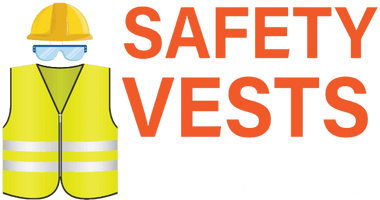
What Are the Coverall Standards for Fire Hazards?
Flame resistant coveralls are an essential component of personal protective equipment in fire prone work environments. These garments protect workers from flash fires, arc flash, and other fire-related hazards. They are made to self-extinguish or resist ignition. It is important to understand what coveralls are standard for fire hazards, why it is essential to meet the safety standards, and when it is required to wear flame resistant coveralls for workplace safety compliance and personal protection.
Understanding the Standard for Fire Resistant Coveralls
Safety standards have been developed by globally recognized organizations to ensure FR coveralls perform in hazardous conditions. Some of the most commonly referenced standards include
-
NFPA 2112 (National Fire Protection Association): NFPA 2112 is used in areas with flash fire risks, specifies the minimum requirements for FR garments. This standard mandates that coveralls must pass rigorous testing, including vertical flame tests and thermal protective performance evaluations.
-
NFPA 70E: NFPA 70E provides guidelines for electrical safety, including the need for arc-rated FR clothing in areas with arc flash exposure.
-
ASTM F1506: Establishes performance requirements for textiles used in electrical arc flash environments. Flame resistance and physical durability criteria must be met by garments.
-
OSHA (Occupational Safety and Health Administration): OSHA needs employers to make sure that workers wear the appropriate PPE, referencing the standards set by NFPA and ASTM.
These standards determine the testing requirements, labeling, and design criteria to make sure FR coveralls provide a reliable defense in hazardous settings.
Why Is It Essential to Meet the Safety Standards?
It is essential to meet the recognized safety standards for flame resistant coveralls to prevent injuries. Here’s why it matters:
-
Worker Safety: Burn injuries might be prevented by wearing properly certified FR coveralls. They do not melt onto the skin, prevent further ignition, and allow precious seconds to escape fire hazards.
-
Legal Compliance: Employers are legally obligated to provide protective garments that meet OSHA regulations. Non-compliance might result in hefty fines, lawsuits, and workplace shutdowns.
-
Liability Protection: Adhering to certified standards offers a strong defense in the event of litigation following a workplace incident. Demonstrating the use of compliant PPE showcases due diligence.
-
Workplace Morale and Productivity: Employees feel more confident and secure when they know their safety is a priority.
When Is It Required to Wear Flame Resistant Coveralls?
These work coveralls are required in any work environment where exposure to fire hazards is present. Some specific scenarios include:
-
Oil and Gas Industry: Workers are frequently exposed to flash fire risks while operating on rigs or in refineries.
-
Electric Utility Work: Utility workers who face the threat of arc flashes need protective garments rated to withstand intense heat and energy release.
-
Welding and Metalworking: For welders and foundry workers, FR clothing is essential for sparks, slag, and molten metal.
-
Chemical Plants: Due to volatile substances and combustion risks, fire resistant clothing becomes non-negotiable.
Employers must conduct hazard assessments to determine when and where FR clothing is required and ensure that the garments provided match the level of risk associated with the tasks being performed.
How Flame Resistant Coveralls Are Different from Standard Coveralls
Many workers believe all coveralls provide the same level of protection. However, how flame resistant coveralls are different from the standard coveralls lies in the very fabric composition and treatment:
|
Feature |
FR Coveralls |
Standard Coveralls |
|
Material |
Inherently FR fabrics or chemically treated blends |
Cotton, polyester, or poly-cotton blends |
|
Reaction to Fire |
Self-extinguishing, resistant to ignition |
Highly flammable, may melt or drip |
|
Safety Standards |
NFPA 2112, NFPA 70E, ASTM F1506 |
May not comply with any fire safety standards |
|
Use Case |
High-risk environments (fire, arc flash, chemicals) |
General workwear |
|
Durability |
Designed to withstand multiple washes and flames |
Not designed for fire exposure |
Due to reduced injury risks and compliance fines, investing in certified FR coveralls is a cost-effective choice in the long run.
To provide essential protection from fire hazards, FR coveralls serve as a first line of defense in high-risk environments. To make businesses and employees informed, compliant, and safe choices, it is important to understand what are coveralls standard is for fire hazards, why it is essential to meet the safety standards, and when it is required to wear the flame resistant coveralls. Always select garments that meet certified standards and are fit for the hazards faced on the job.
Frequently Asked Questions
When do we need to wear the flame resistant coveralls?
Wearing flame-resistant coveralls is recommended in areas where there is a risk of fire, arc flash, or explosion, such as chemical, welding, oil and gas, or electrical settings.
When do we need to wear flame resistant coveralls?
When there is a risk of exposure to flash fires, electric arcs, or flammable substances that could ignite during routine tasks, FR coveralls are needed.
What kind of hazards do these flame resistant coveralls protect from?
They guard against thermal burns brought on by abrupt ignition or exposure to high heat, flash fires, arc flashes, and splashes of molten metal.
What materials are used for designing flame resistant coveralls?
FR coveralls are constructed from inherently flame-resistant materials such as Nomex or chemically treated fabrics like FR cotton blends, which are designed to self-extinguish.
